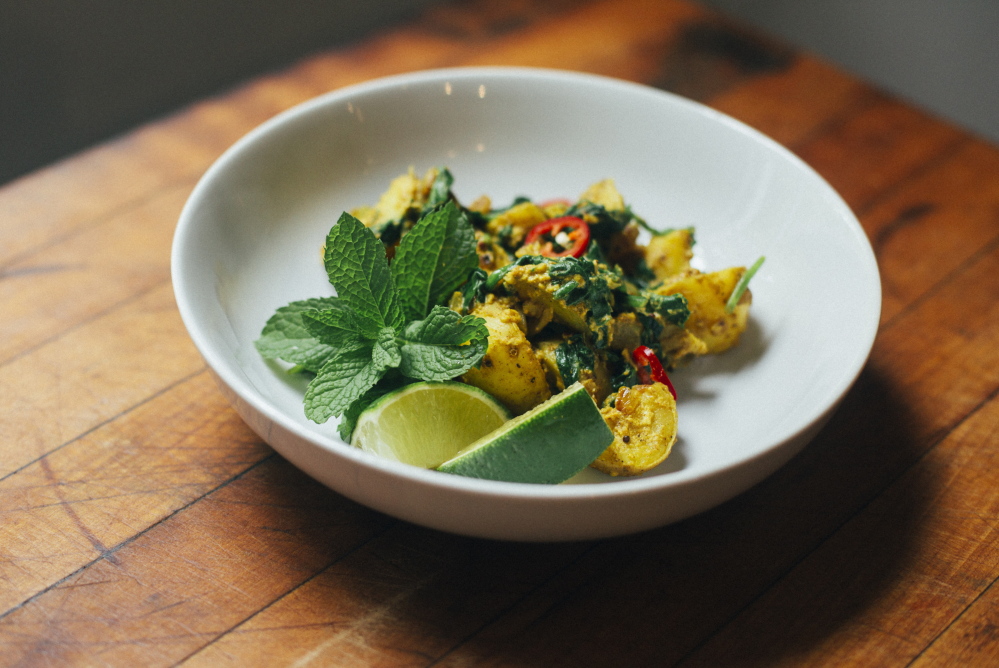The “sell by,” “best before,” “enjoy by” and “use by” dates stamped on commercial food packaging don’t actually mean what most Americans think they do.
Food date stamps, popularized in the 1970s when grocery store culture had firmly taken root and consumers were pulling more food off shelves and less from their gardens, were never intended to be an indication of a food’s microbial safety, as 9 out of 10 consumers today believe, says JoAnne Berkenkamp, senior advocate in the Natural Resources Defense Council’s Food and Agriculture Program. Rather, they were designed as an indication of a product’s freshness, when it should be at its flavor peak, the point at which it might start to become stale, not when it poses a mortal threat to an eater.
Adding to the confusion – there is neither a standard practice for how these dates are set (some are determined in labs by scientists, others in conference rooms by taste testers) nor a consistent regulatory policy for mandating their use across state lines (in Maine, only shellfish is required by law to carry a date stamp).
Since more than half of Americans admit to chucking food past the sell-by date just to buy more of the same, the food industry has little financial incentive to demuddle the situation.
The Natural Resources Defense Council argues these imprints do more harm than good to the American food system because they add significantly to the 160 billion pounds of food wasted annually; hinder food recovery and redistribution efforts; and squander the energy required to produce, transport and store food across the country. The organization is working to establish a reliable, coherent dating system that puts both freshness and food safety dates (where necessary) in predictable spots on all packaging.
But all that will take congressional action, so what’s an eater to do in the meantime? Berkenkamp says first and foremost shop in moderation. “Resist that great buy if it means you are picking up an item in a quantity that you can’t reasonably consume,” she said, adding that sticking to a list is another good way to avoid overbuying.
And if you do buy in bulk, have a detailed plan for using up every last bit. If, for example, you buy the huge container of baby spinach for a salad on Monday, plan to make a quick potato and spinach curry (recipe below) for Thursday.
Instead of tossing food because of a date stamp, “Trust your senses more,” says Berkenkamp. Is the food discolored? Does it smell off?
And, finally, understand the intricacies of using your refrigerator to store food over time. Things that will rot should go in the low humidity drawer and things that will wilt in the high humidity drawer. For efficiency’s sake, neither drawer should ever be more than two-thirds full.
Berkenkamp readily admits these measures reflect common sense more than revolutionary sustainability practice. But given our national pastime for throwing away perfectly good food, perhaps we need more people stating the obvious for it to be heard.
CREAMY POTATO AND SPINACH CURRY
This recipe, adapted from Delicious, one of my favorite British food magazines, uses up three of the items I tend to buy too much of when grocery shopping: baby spinach, new potatoes and yogurt.
Serves 6
1/2 pound baby leaf spinach
1 pound small new potatoes, quartered
2 tablespoons canola or grapeseed oil
1 large onion, finely chopped
2 large garlic cloves, finely chopped
1 teaspoon black mustard seeds
1 teaspoon ground coriander
1 teaspoon garam masala
½ to 1 teaspoon red chili flakes, to taste
½ teaspoon ground turmeric
½ teaspoon ground cumin
2 tablespoons butter
1 cup Greek yogurt (it needs some fat in the yogurt to help prevent it curdling)
1-inch piece of fresh ginger, grated
Salt and pepper, to taste
Fresh mint leaves, ½ red chili, sliced, and lemon or lime wedges for garnish
Put spinach in a colander.
Place potatoes in medium pan with salted cold water. Bring pot to a boil, cook for 8 to 10 minutes until potatoes are just tender. Drain potatoes over colander of spinach to wilt the leaves. Refresh leaves with cold water and squeeze to remove excess water. Roughly chop spinach and set aside.
Prick potatoes with a fork to roughen the edges so the curry sauce will stick to them. Set aside.
Heat oil in a large sauté pan over a medium heat. Add onion and a pinch of salt and cook for 6 to 8 minutes, stirring, until golden. Add garlic and spices, then cook, stirring, for 1 minute. Add butter and potatoes, stir to coat. Cook for 10 minutes, stirring occasionally so spices don’t burn. Turn heat to its lowest setting.
Combine yogurt, ginger, salt and pepper. Stir mixture into the pan with 2 tablespoons of water and heat very gently (to prevent the yogurt from curdling) for 5 minutes until the potatoes are very tender and the sauce is thickened. Stir reserved wilted spinach through the curry.
Scatter mint and sliced chili over curry. Serve warm with lemon or lime wedges.
Christine Burns Rudalevige is a food writer, recipe developer and tester, and cooking teacher in Brunswick. Contact her at cburns1227@gmail.com.
Send questions/comments to the editors.


